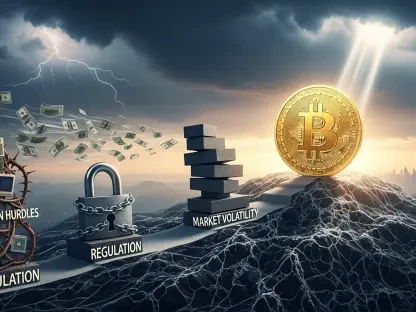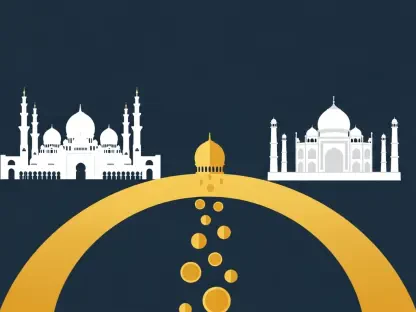Which Blockchain Platforms Will Shape the Industry by 2025?
Blockchain technology has come a long way since its conceptual proposal in 1991. From the inception of Bitcoin in 2009 to the introduction of Ethereum’s smart contracts in 2015, the blockchain landscape has evolved significantly. As we look towards 2025, several platforms are poised to shape the industry, driven by advancements in technology, regulatory frameworks, and innovative applications.
Evolution and Milestones in Blockchain Technology
Blockchain technology has evolved significantly since its inception, achieving numerous milestones along the way. The essential concept of blockchain emerged with the introduction of Bitcoin in 2009 by an anonymous entity known as Satoshi Nakamoto. This decentralized digital currency laid the groundwork for blockchain’s potential applications beyond finance. In 2015, Ethereum expanded these possibilities by introducing smart contracts, which allowed for automated, self-executing agreements directly on the blockchain. This innovation sparked a wave of new blockchain-based projects and applications, including decentralized finance (DeFi) and non-fungible tokens (NFTs). As the technology continues to mature, it holds promise for revolutionizing various industries, from supply chain management to healthcare, by providing secure, transparent, and efficient systems.
Early Developments and Bitcoin’s Inception
The journey of blockchain technology began with the conceptual proposal in 1991, but it wasn’t until 2009 that Bitcoin, the first decentralized cryptocurrency, was introduced by an anonymous entity known as Satoshi Nakamoto. Bitcoin’s creation marked a significant milestone, laying the foundation for the development of blockchain technology. Prior to Bitcoin, the concept of a decentralized ledger, where data could be securely stored and shared, was mostly theoretical.
Bitcoin’s introduction demonstrated the practical application of this concept. It showcased a system where transactions could be verified by network participants, eliminating the need for central authorities. This decentralized approach to financial transactions quickly gained traction, as it offered a level of security, transparency, and immutability previously unseen in traditional financial systems. The success of Bitcoin paved the way for the broader exploration of blockchain’s potential beyond mere digital currency.
Ethereum and Smart Contracts
In 2015, Ethereum revolutionized the blockchain space by introducing smart contracts, which are self-executing contracts with the terms of the agreement directly written into code. This innovation expanded the potential use cases of blockchain beyond cryptocurrencies, enabling the development of decentralized applications (dApps). Smart contracts brought programmability to the blockchain, allowing for automatic execution of contract terms without intermediaries.
Ethereum’s creation by Vitalik Buterin gave developers a platform for building complex applications that could operate autonomously on the blockchain. This development fundamentally transformed how blockchain was perceived, moving it from simply a financial tool to a comprehensive solution for numerous industries. With smart contracts, use cases in fields such as supply chain management, real estate, and even gaming began to emerge, illustrating the vast potential of blockchain technology.
ICO Boom and DeFi Rise
The Initial Coin Offering (ICO) boom in 2017 brought blockchain technology into the mainstream, allowing startups to raise funds by issuing their own tokens. This period saw a proliferation of new projects and platforms leveraging blockchain to offer innovative solutions across various sectors. ICOs provided a new method of fundraising that bypassed traditional venture capital routes, democratizing access to capital for a broader range of entrepreneurs.
Following this, the rise of Decentralized Finance (DeFi) in 2018 further showcased the potential of blockchain to disrupt traditional financial systems. DeFi platforms offered decentralized alternatives to conventional financial services such as lending, borrowing, and trading. These services were facilitated by smart contracts on the Ethereum blockchain, eliminating intermediaries and reducing costs. The DeFi movement demonstrated how blockchain could enable a more inclusive financial ecosystem that operates transparently and efficiently.
NFTs and Interoperability
The surge of Non-Fungible Tokens (NFTs) in 2020 highlighted the unique capabilities of blockchain in creating and trading digital assets. NFTs represent ownership of unique items, including digital art, music, and virtual real estate, authenticated through the blockchain. This new form of digital ownership caught the attention of artists, collectors, and investors, leading to a booming market for digital collectibles.
By 2023, interoperability became a defining milestone in the blockchain space, enabling different blockchain networks to communicate and work together seamlessly. Interoperability initiatives aimed to address the fragmentation within the blockchain ecosystem, where multiple isolated blockchains operated independently. Achieving interoperability allows for greater integration and collaboration between platforms, facilitating more complex and expansive decentralized applications. This evolution is essential for scaling blockchain technology and broadening its real-world applications.
Anticipated Advancements by 2025
Ethereum’s Transition to Proof of Stake
Ethereum’s transition to Proof of Stake (PoS) has significantly reduced its energy consumption, setting a new standard for sustainability in the blockchain industry. This shift is expected to drive further adoption and innovation on the Ethereum network. The PoS consensus mechanism replaces energy-intensive mining processes with a more efficient system where validators are chosen based on the number of tokens they hold and are willing to “stake” as collateral. This method not only conserves energy but also enhances network security and scalability.
The environmental benefits of PoS are particularly pertinent as global awareness and regulatory pressure on sustainability continue to rise. Ethereum’s transition to PoS aligns with broader societal and regulatory expectations, positioning it as a leader in responsible blockchain innovation. As a result, more projects are likely to build on Ethereum, leveraging its eco-friendly and robust infrastructure to develop new applications and services.
Regulatory Frameworks and Real-World Applications
Regulatory frameworks like the EU’s Markets in Crypto-Assets (MiCA) are creating a favorable environment for blockchain advancement. These frameworks provide clearer guidelines and regulations for blockchain projects, fostering a more predictable and secure environment for developers and investors. This regulatory clarity is crucial for the widespread adoption of blockchain technology, as it reduces uncertainties and risks associated with regulatory compliance.
Real-world applications, such as tokenization and stablecoins, are on the rise, providing practical use cases for blockchain technology in various industries. Tokenization involves converting real-world assets, such as real estate or artwork, into digital tokens on a blockchain. This process allows for fractional ownership, improved liquidity, and easier transferability of assets. Stablecoins, which are cryptocurrencies pegged to stable assets like fiat currencies, offer a reliable means of transaction and storage of value, making them suitable for everyday use.
Innovations in Wallet Services and AI Integration
Innovations like wallet-as-a-service and the integration of AI and blockchain are improving customer experiences. Wallet-as-a-service platforms provide simplified and secure management of digital assets, making it easier for users to interact with blockchain applications. These services offer features such as multi-signature wallets, hardware wallet integration, and seamless access to decentralized applications, enhancing user convenience and security.
For instance, AI crypto trading tools on platforms like Fusio Wallet are enhancing the efficiency and effectiveness of trading activities. These tools leverage artificial intelligence to analyze market data, predict trends, and execute trades automatically. The integration of AI and blockchain creates a more dynamic and responsive trading environment, where decisions can be made based on real-time data analysis without human intervention. This synergy between AI and blockchain is expected to drive significant advancements in various sectors, from finance to healthcare.
Addressing Security Concerns
Addressing concerns like post-quantum cryptography is crucial for ensuring the security of blockchain networks. As quantum computing advances, blockchain platforms must evolve to maintain their security and integrity. Quantum computers have the potential to break traditional cryptographic algorithms used in blockchain, posing a significant threat to its security.
To counter this, researchers and developers are exploring post-quantum cryptographic solutions that can resist quantum attacks. These new cryptographic schemes aim to provide robust security that can withstand the computational power of quantum computers. Ensuring long-term security is imperative for the continued trust and adoption of blockchain technology. As blockchain platforms implement these advanced cryptographic techniques, they will remain resilient against emerging security threats, maintaining user confidence and network integrity.
Key Blockchain Platforms for 2025
Stellar: Simplifying Cross-Border Payments
Stellar focuses on simplifying cross-border payments and enhancing financial inclusion. Its low transaction costs, high transaction speeds, and integration with traditional financial systems make it a promising platform for remittances, cross-border payments, and financial services. Stellar’s consensus protocol, known as the Stellar Consensus Protocol (SCP), allows for faster and more secure transactions compared to traditional methods.
Partnerships with institutions like IBM emphasize its potential in global finance. IBM’s World Wire, a payment network powered by Stellar, facilitates international settlements between banks in near real-time. This collaboration demonstrates how Stellar’s technology can be leveraged to create efficient and cost-effective financial solutions on a global scale. Moreover, Stellar’s focus on inclusivity aims to provide financial services to unbanked and underbanked populations, promoting greater financial access and equality.
Polkadot: Enabling Interoperability
Polkadot is designed to enable interoperability across different blockchains. Using its DOT token for governance, staking, and bonding, Polkadot addresses scalability and interoperability challenges. Polkadot’s unique architecture allows multiple blockchains, known as “parachains,” to operate simultaneously and communicate with each other through the central Relay Chain.
This design facilitates the development of multi-chain decentralized applications, enabling blockchain bridging and seamless data sharing. Polkadot’s approach helps unify the fragmented blockchain ecosystem, allowing different networks to leverage each other’s strengths and capabilities. By fostering interoperability, Polkadot enhances the overall functionality and potential of decentralized applications, making it a pivotal player in the blockchain ecosystem.
Solana: High-Speed and Low-Cost Transactions
Recognized for its high-speed and low-cost transactions, Solana features the Proof-of-History consensus mechanism. This innovative approach timestamps transactions, creating a verifiable order of events, which enables the network to process transactions more efficiently. Solana’s architecture supports applications like NFTs, high-frequency trading, and decentralized apps, boasting a peak capacity of 65,000 transactions per second.
Solana’s performance and scalability make it a strong contender for shaping the future of blockchain. Its ability to handle a high volume of transactions with minimal latency and cost appeals to developers and businesses seeking robust and scalable solutions. Solana’s ecosystem continues to grow, attracting numerous projects and partnerships that leverage its capabilities to build advanced decentralized applications and services.
Tezos: On-Chain Governance and Energy Efficiency
Tezos is known for its on-chain governance and energy efficiency. Its emphasis on upgradeability without requiring forks makes it a versatile platform for enterprise applications, NFTs, and DeFi. Tezos’ governance model allows stakeholders to participate in the decision-making process, proposing and voting on protocol upgrades. This approach ensures that the network can evolve and adapt to changing needs without disruptive hard forks.
Tezos’ adaptability and efficient governance model position it well for forward-thinking projects. Its focus on energy efficiency also aligns with growing environmental consciousness, making it an attractive option for projects that prioritize sustainability. By fostering a collaborative and adaptive ecosystem, Tezos continues to support innovative applications and drive blockchain adoption across various industries.
Cardano: Peer-Reviewed Research and Sustainability
Built on peer-reviewed research, Cardano employs the proof-of-stake Ouroboros consensus protocol. With a focus on sustainability and scalability, updates like Hydra position Cardano for applications in identity verification, supply chain management, and DeFi. Cardano’s scientific approach and commitment to sustainability make it a noteworthy platform.
Cardano’s emphasis on rigorous academic research and evidence-based development ensures that its solutions are robust, secure, and efficient. The Hydra update aims to significantly increase the network’s scalability, enabling it to process thousands of transactions per second. This scalability, combined with Cardano’s low energy consumption, positions it as a leading platform for sustainable and scalable blockchain solutions.
Aptos: Scalability and User Experience
Aptos, a Layer 1 blockchain, emphasizes scalability, user experience, and security. Its primary applications are in Web3, gaming, and social networks, with a design favoring scalability. Aptos’ architecture is built to handle a high volume of transactions while maintaining a streamlined and user-friendly experience.
Aptos’ focus on user experience and security makes it a promising platform for the future. By prioritizing ease of use and robust security measures, Aptos aims to attract a broad range of users and developers. Its potential applications in Web3, gaming, and social networks highlight its versatility and readiness to support the next generation of decentralized applications.
The SEC’s Cautious Approach and Call for Public Comment
In its deliberate approach to addressing the complexities of cryptocurrencies, the SEC opted for another delay in its verdict on the spot Ethereum ETF. The extension grants the SEC an opportunity not only to conduct an in-depth examination of Ethereum’s suitability for ETF status but also to source public insight, which could heavily sway the conclusion. This speaks to the SEC’s attentiveness to the nuances of digital assets and their integration into regulatory frameworks, which it does not take lightly. The situation closely parallels the stalling faced by Grayscale, who is also waiting for the green light to transform its Ethereum Trust into a spot ETF, raising questions about the contrasting regulatory processes for Bitcoin and Ethereum.
StarkNet: Enhancing Ethereum’s Scalability
StarkNet, a Layer 2 solution, enhances Ethereum’s scalability through ZK-Rollups, which provide improved scalability and privacy. ZK-Rollups bundle multiple transactions into a single batch, reducing the load on the Ethereum mainnet and increasing transaction throughput. This approach allows StarkNet to offer faster and cheaper transactions without compromising security.
StarkNet is significant for high-performance DeFi applications and Ethereum scaling. By providing a scalable solution that integrates seamlessly with Ethereum, StarkNet enhances the network’s capacity to handle a growing number of decentralized applications. This scalability is crucial for supporting the continued expansion and adoption of DeFi and other Ethereum-based services.
Overarching Trends and Consensus Viewpoints
Analyzing the recent advancements in technology reveals overarching trends that indicate significant shifts in both consumer behavior and market dynamics. These trends have been shaped by the increasing prevalence of artificial intelligence, the growing dependence on renewable energy sources, and the rise of remote working environments. Moreover, expert consensus points towards a future where the convergence of these elements will redefine traditional business models and pave the way for innovative solutions to global challenges.
AI and Blockchain Integration
Integrating AI with blockchain is poised to create a decentralized AI ecosystem, enhancing production processes and enabling machine learning-powered agents to operate autonomously on decentralized networks. This integration can revolutionize various sectors, from finance to healthcare, by providing more accurate predictions, automating complex tasks, and creating more efficient systems.
Innovations include agent-to-agent payments via new crypto technology. These developments enable automated and secure transactions between AI agents, facilitating faster and more efficient interactions. The combination of AI and blockchain holds the potential to transform industries, driving greater automation, efficiency, and innovation.
Real-World Asset Tokenization
Tokenizing real-world assets like real estate and art adds them to the blockchain ecosystem, facilitating fractional ownership and increasing liquidity. This process allows assets to be divided into smaller, tradable units, making them more accessible to a broader range of investors.
For instance, Dubai’s DAMAC Group partnering with MANTRA to tokenize assets highlights this trend. By leveraging blockchain technology, traditional assets can benefit from the security, transparency, and efficiency of decentralized systems. Asset tokenization expands investment opportunities and enhances the overall liquidity of traditionally illiquid markets.
Privacy-Focused Blockchains
In response to growing privacy concerns, these blockchains offer advanced cryptographic techniques to protect transaction details and user identities. Privacy-focused blockchains aim to balance data security with the transparency inherent in decentralized systems, ensuring that sensitive information remains confidential while maintaining overall network integrity.
These solutions are becoming increasingly important as digital privacy concerns grow. By providing robust privacy features, these blockchains can attract users who prioritize confidentiality and data protection, expanding the appeal and utility of blockchain technology.
Interoperability Solutions
As numerous blockchain networks emerge, creating interoperability solutions like cross-chain protocols becomes essential. These solutions enhance communication between different blockchains, unifying the fragmented ecosystem and boosting the potential of decentralized applications.
Interoperability solutions enable seamless interactions between diverse blockchain networks, allowing them to share data and functionality. This integration fosters collaboration and innovation, driving the development of more complex and versatile applications that leverage the strengths of multiple blockchain platforms.
Conclusion
Blockchain technology has made impressive strides since its initial concept was proposed in 1991. The journey truly began with the advent of Bitcoin in 2009, which introduced the world to a decentralized digital currency system. This breakthrough was followed by the launch of Ethereum in 2015, which brought smart contracts into the mainstream. These self-executing contracts, with the terms of the agreement directly written into code, represented a significant leap forward for blockchain applications.
As we look ahead to 2025, the blockchain landscape is projected to undergo even more transformative changes. Several platforms are at the forefront of this evolution, fueled by technological advancements, evolving regulatory frameworks, and a surge in innovative applications. These platforms are not only enhancing the capabilities of blockchain technology but also expanding its use cases across various industries.
From finance to supply chain management, healthcare to real estate, blockchain is poised to revolutionize the way we conduct and verify transactions, ensuring greater security, transparency, and efficiency. The continuous development of decentralized applications (dApps) and the integration of artificial intelligence (AI) into blockchain are expected to further expand its potential.
As blockchain becomes increasingly integrated into the fabric of our digital infrastructure, its impact will be felt more profoundly across the globe. The future, driven by these advancements, promises a more secure and efficient digital ecosystem, shaping industries far beyond what we can currently envision.









